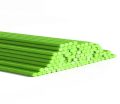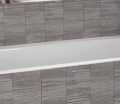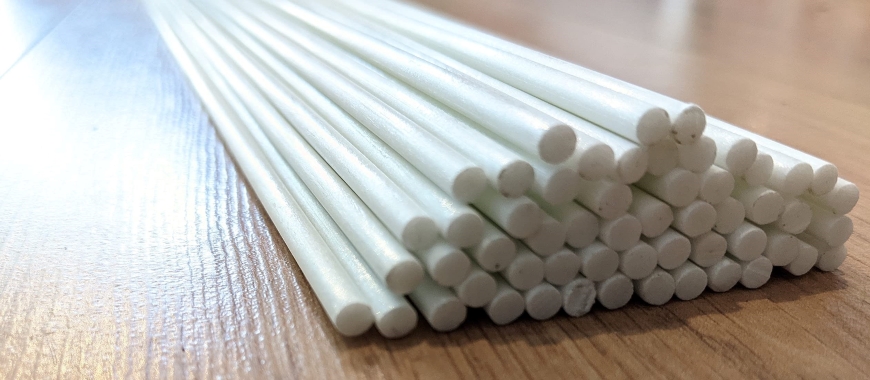
Solid black or white fiberglass rods are popular choices in various industries due to their exceptional properties. These rods are known for their durability, making them suitable for demanding applications. Whether used in construction, fishing, or crafting, solid black or white fiberglass rods provide reliable performance. Their lightweight nature allows for easy handling, while their resistance to corrosion ensures longevity. Additionally, these rods are versatile and can be customized for different uses. This adaptability makes them an excellent option for both professionals and hobbyists alike. Solid black or white fiberglass rods offer a combination of strength and flexibility that meets diverse needs effectively. Solid black or white fiberglass rods are durable, flexible, lightweight, non-conductive, and nearly indestructible, ideal for various uses.
Types and Specifications of Solid Black or White Fiberglass Rod
Solid fiberglass rods are highly valued across industries for their strength, flexibility, and versatility. Made from high-quality fiberglass, these rods are lightweight, durable, and available in various lengths, sizes, and colors to suit specific applications. Below is a detailed introduction to the common lengths and sizes available to guide buyers in selecting the ideal rod.
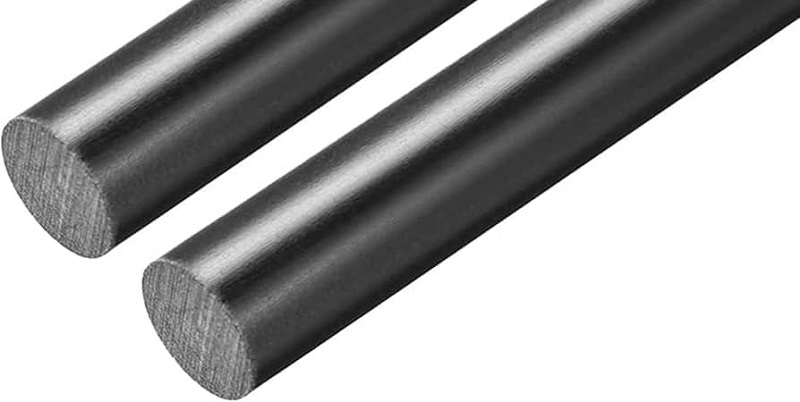
Common Lengths
- 6 Feet: Ideal for compact applications such as crafting, lightweight supports, and smaller construction projects. Its shorter length makes it easy to handle and transport.
- 8 Feet: A medium-length option suitable for moderate-sized projects, offering a balance between reach and maneuverability. It’s commonly used in indoor construction and decorative frameworks.
- 10 Feet: The standard and most popular length for solid fiberglass rods. This versatile size is widely used for general applications, including outdoor frameworks, reinforcements, and fishing rods.
- 12 Feet and Above: Longer lengths are available for custom orders, catering to large-scale projects requiring extended reach, such as industrial supports or tall frameworks.
Common Sizes
- 1/4-Inch Diameter: A thin and lightweight option used for delicate applications like crafts, small structural supports, or lightweight extensions.
- 1/2-Inch Diameter: A widely used size known for its excellent balance of flexibility and strength. It’s ideal for general-purpose applications, including construction, frameworks, and fishing.
- 1-Inch Diameter: A thick, heavy-duty option designed for industrial applications, supporting larger structures, or handling high-stress scenarios.
Aesthetic and Functional Options
Solid fiberglass rods are available in black and white, offering aesthetic choices for various projects. Black rods are often used for a modern, sleek appearance, while white rods provide a clean and neutral look.
This detailed breakdown of lengths and sizes ensures that buyers can easily identify the best solid black or white fiberglass rod for their specific needs.
Shapes of Solid Black or White Fiberglass Rod
Solid black or white fiberglass rods are manufactured in various shapes, including round, square, and other specialized profiles. Each shape is designed to cater to specific applications, offering unique advantages and disadvantages. Below is a detailed exploration of these shapes and their uses to help users select the most appropriate type for their needs.
Round Fiberglass Rods
Round rods are the most common shape for fiberglass rods. They have a uniform cylindrical profile and are available in various diameters and lengths.
Advantages:
- Strength and Durability: Their uniform design distributes stress evenly, making them ideal for structural applications.
- Ease of Handling: The smooth surface and shape make them easy to grip and work with.
- Versatility: Suitable for a wide range of uses, including fishing rods, tent poles, and reinforcement bars.
Disadvantages:
- Limited Surface Area: The circular profile may not provide enough surface area for certain applications requiring secure attachment or stability.
Applications:
- Fishing rods, tent poles, flagpoles, and structural supports.
Square Fiberglass Rods
Square rods have four flat sides, providing a geometric profile that offers greater surface area compared to round rods.
Advantages:
- Stability: The flat surfaces make them ideal for applications requiring secure attachment or better contact points, such as mounting brackets.
- Increased Surface Area: Easier to bond with adhesives or fasteners.
Disadvantages:
- Reduced Flexibility: The shape limits bending, making them less suitable for applications needing high flexibility.
Applications:
- Frameworks for construction, furniture supports, and mounting applications where stability is crucial.
Other Shapes (Rectangular, Hexagonal, Custom Profiles)
Besides round and square rods, solid black or white fiberglass rods can be manufactured in rectangular, hexagonal, or custom profiles to meet specific project requirements.
Advantages:
- Custom Fit: Tailored shapes meet unique application needs.
- Specific Strengths: For example, rectangular rods provide added strength along certain axes, while hexagonal rods offer a balance of flexibility and stability.
Disadvantages:
- Higher Cost: Custom shapes are typically more expensive due to specialized manufacturing processes.
- Limited Availability: May not be readily available and require custom orders.
Applications:
- Industrial machinery components, decorative frameworks, and specialized construction projects.
The shapes of solid black or white fiberglass rods is essential for selecting the right rod for specific applications. Round rods are versatile and widely used, square rods excel in stability and attachment, while other custom shapes address unique needs. By considering the advantages, disadvantages, and applications of each shape, users can confidently choose the most suitable option for their projects.
Weight Characteristics of Solid Black or White Fiberglass Rod
The weight of a solid black or white fiberglass rod depends on its length, diameter, and density. These rods are made entirely of fiberglass, which gives them a consistent and predictable weight proportional to their dimensions. Understanding the common weights and their relationships is crucial for choosing the right rod for specific applications.
Common Weights of Solid Black or White Fiberglass Rod
Lightweight Rods
- Range: Typically weigh between 1 to 3 pounds.
- Specifications: These rods are usually shorter (6–8 feet) with smaller diameters (1/4 inch or less).
- Applications: Ideal for crafting, lightweight supports, and hobby projects where portability is essential.
Medium-Weight Rods
- Range: Weigh between 4 to 8 pounds.
- Specifications: Commonly 8–10 feet long with diameters of 1/2 inch.
- Applications: Widely used in general-purpose applications, such as construction frameworks, fishing rods, and tent poles.
Heavyweight Rods
- Range: Weigh 10 pounds or more.
- Specifications: Typically longer than 10 feet and thicker (1 inch or more in diameter).
- Applications: Designed for heavy-duty use in industrial supports, structural reinforcements, and high-stress applications.
Relationships and Differences Between Weights
- Relationship to Size: The weight of a solid fiberglass rod is directly proportional to its length and diameter. Longer and thicker rods weigh more, making them suitable for demanding tasks.
- Portability vs. Strength: Lighter rods are more portable and easier to handle, while heavier rods provide greater strength and durability but are harder to transport.
- Flexibility and Use Case: Lighter rods tend to offer more flexibility, whereas heavier rods are rigid and better for structural applications.
- Cost Considerations: Heavier rods require more material and are typically more expensive than lighter options.
By evaluating the weight characteristics and their implications, users can determine which solid black or white fiberglass rod best meets the demands of their specific projects.
Benefits of Solid Fiberglass Rods
Solid black or white fiberglass rods are valued for their exceptional durability, lightweight properties, corrosion resistance, and versatility across various applications. Below is a more detailed exploration of their advantages to provide a clearer understanding of why these rods are widely used in both professional and amateur projects.
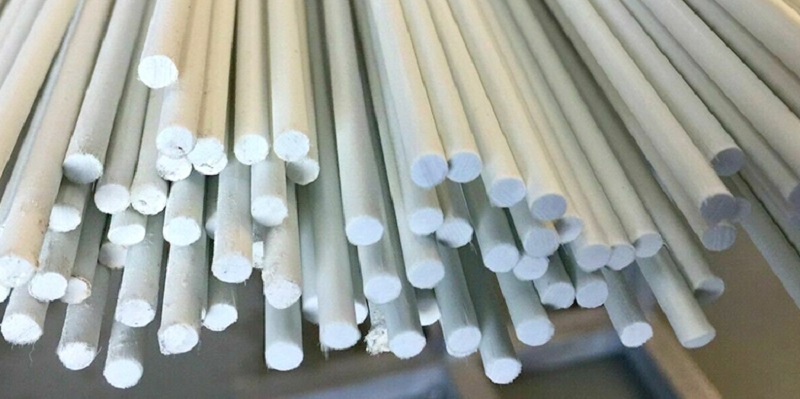
Durability of Solid Black or White Fiberglass Rod
Solid fiberglass rods are engineered to withstand wear and tear in demanding environments. Their robust construction makes them resistant to cracking, bending, or breaking under high stress. Unlike other materials, fiberglass rods retain their structural integrity even under extreme conditions such as heavy loads, impacts, or fluctuating temperatures.
- Real-World Applications: In construction, these rods serve as reinforcement materials, enduring high tension without failure. For fishing, they withstand constant bending and pulling, ensuring longevity.
- Key Feature: This unmatched durability minimizes replacement costs, making them a cost-effective long-term investment.
Corrosion Resistance of Solid Black or White Fiberglass Rod
A standout feature of fiberglass rods is their resistance to corrosion, setting them apart from metal alternatives like steel or aluminum. Fiberglass does not rust, weaken, or degrade when exposed to water, salt, chemicals, or extreme weather conditions.
- Marine Use: Perfect for marine applications, these rods maintain their strength and performance even when submerged in seawater.
- Outdoor Applications: In outdoor structures, such as flagpoles or tent poles, they resist the wear caused by rain, humidity, or UV radiation.
- Chemical Resistance: Their ability to resist industrial chemicals makes them ideal for factory settings or chemical processing plants.
Lightweight Properties of Solid Black or White Fiberglass Rod
Despite their impressive strength, solid fiberglass rods are incredibly lightweight. This balance is particularly beneficial for industries requiring frequent handling or transport.
- Enhanced Portability: Fiberglass rods can be carried and installed effortlessly, even in large quantities, reducing labor fatigue during construction or setup.
- Efficiency in Design: Their lightweight nature enables the creation of portable and mobile structures, such as fishing poles, portable supports, and recreational gear.
- Cost-Saving Transport: Lower weight translates to reduced shipping costs for bulk orders.
Advantages for Amateur and Professional Applications
For Amateur Users:
- Affordability: Solid fiberglass rods are a budget-friendly option for DIY enthusiasts and hobbyists, providing high performance without the steep cost of alternatives like carbon fiber.
- Ease of Use: Their manageable weight and flexibility make them easy to cut, shape, or install in projects like garden supports, crafts, or recreational builds.
For Professional Users:
- High Strength: Professionals benefit from the superior tensile strength of fiberglass rods, which ensures reliability in critical applications such as construction, automotive, and marine settings.
- Environmental Resilience: In industries like oil and gas or chemical processing, the rods withstand exposure to harsh chemicals, heat, and stress without losing performance.
- Customization: Available in various lengths, diameters, and shapes, fiberglass rods can be tailored to meet precise industrial requirements.
Flexibility and Versatility
Fiberglass rods offer flexibility, which allows them to bend under pressure without breaking, making them suitable for dynamic applications.
- Fishing Gear: Their flexibility makes them ideal for fishing rods that must absorb sudden tension from fish strikes.
- Structural Uses: In construction, their ability to flex without snapping enhances their shock resistance, especially in areas prone to vibrations or seismic activity.
Solid black or white fiberglass rods combine durability, corrosion resistance, lightweight properties, and versatility to cater to a wide range of needs. Their features not only make them an ideal choice for amateur projects but also ensure consistent and reliable performance in professional and industrial applications. By understanding these detailed benefits, users can see why these rods are a preferred option for long-term use in diverse fields.
Discover If Are Fiberglass Rods Used in Camping Chairs Cheap
Applications of Solid Fiberglass Rods
Solid black or white fiberglass rod is commonly utilized across many industries due to its strength and versatility.
- In construction, it is often applied in reinforcing structures, offering excellent durability. The rods resist corrosion, making them ideal for environments where metals may degrade over time. Additionally, these rods are lightweight, which simplifies handling during large-scale construction projects.
- In the fishing industry, the solid black or white fiberglass rod plays a critical role in manufacturing durable fishing rods. The fiberglass rod strength ensures these rods can withstand heavy loads and challenging conditions, making them a preferred choice for their flexibility and resilience. This solid construction guarantees long-lasting performance, even under harsh environments like saltwater exposure.
- Beyond construction and fishing, solid fiberglass rods are applied in other fields such as automotive, marine, and electrical industries.In automotive, they help reduce the weight of components without compromising strength. In marine applications, these rods provide resistance to water and other harsh environmental factors, making them suitable for use in boat construction. Similarly, the solid black or white fiberglass rod is a reliable choice for electrical insulation due to its non-conductive properties.
- Their versatility extends to recreational applications, where fiberglass rods are used for tent poles, kite frames, and other outdoor equipment. These rods are valued for their weather-resistant nature, ensuring longevity across various climates and settings.
The Versatility of Solid Black or White Fiberglass Rod
The solid black or white fiberglass rod offers a wide range of advantages that make it a reliable choice for various industries. Its durability ensures long-lasting performance in demanding environments, such as construction and marine applications. The rod’s corrosion-resistant properties allow it to excel in conditions where metal would deteriorate, while its lightweight nature makes it easy to handle and transport, even for amateur users. These combined features make it a versatile option for both professional and recreational purposes.
Whether used in heavy-duty industrial settings or in simple DIY projects, the solid black or white fiberglass rod provides an effective solution that balances strength and flexibility. From fishing to automotive, these rods meet the diverse needs of different fields. For individuals looking for high-performance, low-maintenance materials, fiberglass rods deliver a reliable, cost-effective solution.
Solid Fiberglass Rods for Your Specific Needs
With so many benefits, the solid black or white fiberglass rod is an ideal material for a variety of uses. From professionals in construction to hobbyists in outdoor activities, there is a fiberglass rod suited to your needs. Consider exploring different types of solid fiberglass rods, such as those offered by trusted brands like GangLong Fiberglass. Their range of products can help meet both industrial and recreational demands, providing you with a durable and practical material for your projects.
How Well Does Fiberglass Rod Hold Thread Successfully
Pricing and Cost Analysis of Solid Black or White Fiberglass Rod
When considering the purchase of solid fiberglass rods, understanding the pricing structure is crucial. The cost can vary based on several factors, including size, specifications, and the type of fiberglass used. In this analysis, we will explore the average price range for solid black or white fiberglass rod options and compare costs across different sizes and specifications.
Average Price Range
The average price for solid black or white fiberglass rod generally falls between $5 to $15 per linear foot. This range can fluctuate based on market demand and the specific characteristics of the rod. For instance, premium quality rods may cost more due to their enhanced durability and resistance to environmental factors.
Size Variations
Different sizes of solid fiberglass rods significantly affect the overall cost. For instance, a 10 ft solid black or white fiberglass rod might typically range from $50 to $150, depending on the diameter and specifications. Smaller sizes, such as a 1/2 fiberglass rod, usually cost less. These rods can range from $20 to $60 for the same length.
Specification Impact
Specifications such as thickness and reinforcement also play a role in determining the price. Thicker rods or those with specialized coatings can increase costs. For example, a 1-inch diameter solid black or white fiberglass rod may be priced higher than a 1/2-inch rod due to the material used and the manufacturing process.
Market Trends
Market trends also affect the pricing of solid black or white fiberglass rods. Fluctuations in raw material costs can lead to changes in pricing. For example, if the cost of fiberglass increases, manufacturers may pass on these expenses to consumers. Additionally, seasonal demand can influence prices; during peak construction seasons, costs may rise due to increased demand.
Buying in Bulk
Buying solid fiberglass rods in black or white in bulk can lead to significant savings. Many suppliers offer discounts for large orders, which can reduce the overall cost per unit. For example, ordering 100 rods might provide a price reduction of 10% to 20% compared to buying them individually.
Additional Costs
When budgeting for solid fiberglass rods, consider additional costs that may arise. Shipping fees can add to the overall price, especially for larger orders. Some suppliers may offer free shipping for orders over a certain amount, which can be beneficial. Additionally, tools or materials needed for installation should also be included in your overall cost analysis.
Long-Term Value
While initial costs are essential, consider the long-term value of investing in solid black or white fiberglass rods. These rods are known for their durability and resistance to environmental factors. A higher upfront cost may lead to lower maintenance and replacement expenses over time, making them a cost-effective choice in the long run.
Exploring Fiberglass Inshore Rods: A Beginner’s Guide to Fishing
Tips for Choosing the Right Solid Fiberglass Rod
Choosing the Best Solid Black or White Fiberglass Rod Based on Use
When selecting a solid black or white fiberglass rod, it’s important to match the rod’s properties to your intended use. For construction purposes, prioritize strength and durability, as the rod needs to withstand heavy loads and extreme conditions. For recreational uses, such as fishing or camping, focus on flexibility and lightweight characteristics, which make the rod easier to handle. Understanding your specific project requirements ensures you select the most effective fiberglass rod.
Weight Requirements for Solid Black or White Fiberglass Rod
The weight of the solid black or white fiberglass rod is another critical factor to consider. Heavier rods are typically more durable and suitable for high-stress applications, such as in construction or industrial projects. In contrast, for portable uses like tent poles, kite frames, or fly fishing rods, lighter fiberglass rods are preferred for ease of transport and handling. Balancing the rod’s weight with its required strength ensures optimal performance.
Recommendations for Reputable Suppliers and Brands
When choosing a solid black or white fiberglass rod, it’s crucial to source from reputable suppliers to guarantee high quality. One trusted name in the industry is GangLong Fiberglass, known for producing durable and versatile fiberglass rods. GangLong Fiberglass offers a range of products that cater to both industrial and recreational applications, ensuring strength, flexibility, and long-lasting performance. Be sure to check customer reviews and product specifications to ensure the rod meets your specific requirements before purchasing.
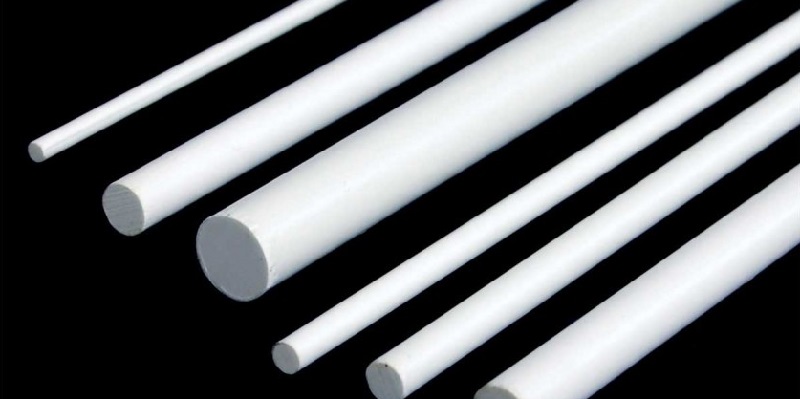
Differences Between Solid Black or White Fiberglass Rod and Hollow Black or White Fiberglass Rod
When choosing between a solid black or white fiberglass rod and a hollow one, it’s essential to understand their structural differences and how these affect their performance, applications, and characteristics. Solid rods are entirely filled with fiberglass, offering superior durability and rigidity, while hollow rods have a core void, making them lighter and more flexible. Below is a detailed table highlighting their differences to help users make an informed decision.
| Aspect | Solid Black or White Fiberglass Rod | Hollow Black or White Fiberglass Rod |
|---|---|---|
| Structure | Completely filled with fiberglass, making it dense and solid. | Contains a hollow core, reducing weight and increasing flexibility. |
| Strength | High strength and impact resistance; ideal for heavy-duty applications. | Lower strength; more suitable for light-duty applications. |
| Weight | Heavier due to its solid construction. | Lightweight, making it easier to handle and transport. |
| Flexibility | Less flexible; maintains its shape under stress. | More flexible, able to bend without breaking. |
| Durability | Extremely durable, resistant to wear and damage. | Less durable; prone to deformation under high stress. |
| Applications | Used in structural supports, reinforcements, and fishing rods. | Ideal for lightweight frameworks, tent poles, and crafting projects. |
| Cost | Typically more expensive due to higher material usage. | Generally more affordable due to reduced material usage. |
Explanation of Differences
- Structure: The solid rod is entirely fiberglass, making it dense and sturdy, while the hollow rod’s empty core reduces its overall density.
- Strength and Durability: Solid rods excel in strength and resistance to heavy loads, whereas hollow rods sacrifice strength for flexibility.
- Weight: Solid rods are heavier, making them less portable, whereas hollow rods are lightweight and easier to use in portable applications.
- Flexibility: Hollow rods are better for projects requiring bending, while solid rods maintain their rigidity under stress.
- Applications: Solid rods are preferred for heavy-duty tasks, while hollow rods cater to lightweight, flexible needs.
- Cost: Due to material usage, solid rods are generally pricier than hollow rods.
By understanding these differences, users can select the type of fiberglass rod that best suits their specific requirements.
Alternatives to Solid Black or White Fiberglass Rod
While solid black or white fiberglass rods are popular for their durability, flexibility, and versatility, there are several alternatives available for specific applications. These alternatives vary in material properties, strength, weight, and cost, making them suitable for different needs. Below is a detailed description of the main alternatives.
Carbon Fiber Rods
Carbon fiber rods are lightweight, rigid, and highly durable, offering superior strength-to-weight ratios.
Advantages:
- Extremely strong and resistant to deformation.
- Lightweight, making them easier to handle and transport.
- Excellent for applications requiring high performance, such as aerospace, automotive, and advanced sporting equipment.
Disadvantages:
- More expensive than fiberglass.
- Less impact-resistant and more prone to cracking under stress.
Applications:Fishing rods, aerospace components, and high-performance structures.
Aluminum Rods
Aluminum rods are metal alternatives known for their combination of strength, lightweight properties, and corrosion resistance.
Advantages:
- Strong and lightweight.
- Resistant to rust and suitable for outdoor applications.
- Easily recyclable.
Disadvantages:
- Less flexible compared to fiberglass.
- More prone to bending under extreme loads.
Applications: Tent poles, structural supports, and automotive parts.
Steel Rods
Steel rods are heavy-duty metal alternatives offering maximum strength and durability.
Advantages:
- Extremely strong and durable under heavy loads.
- Resistant to deformation in industrial applications.
Disadvantages:
- Heavier and less portable.
- Prone to corrosion without proper treatment (e.g., galvanization).
Applications: Construction, industrial frameworks, and reinforcement projects.
PVC Rods
PVC (Polyvinyl Chloride) rods are plastic alternatives that are lightweight, inexpensive, and versatile.
Advantages:
- Cost-effective and easy to work with.
- Non-conductive and corrosion-resistant.
- Lightweight for easy handling.
Disadvantages:
- Lower strength and less durable than fiberglass.
- Limited to light-duty applications.
Applications: Crafts, plumbing, and lightweight structural supports.
Bamboo Rods
Bamboo rods are natural alternatives offering traditional aesthetics and flexibility.
Advantages:
- Renewable and eco-friendly material.
- Lightweight and aesthetically pleasing.
Disadvantages:
- Susceptible to weathering, warping, and decay over time.
- Less durable than fiberglass or metal options.
Applications: Fishing rods, decorative frameworks, and lightweight crafting.
While the solid black or white fiberglass rod remains a versatile and durable choice, alternatives like carbon fiber, aluminum, steel, PVC, and bamboo offer specific advantages depending on the application. Choosing the right material depends on factors such as strength, flexibility, cost, and environmental considerations.
FAQs about Solid Black Or White Fiberglass Rod
Fiberglass rods come in a variety of types, each suited to specific applications. Solid fiberglass rods are known for their strength and durability, making them ideal for industrial uses like construction, automotive, and marine applications. Hollow fiberglass rods, on the other hand, are lightweight and flexible, which makes them more suitable for applications that require flexibility and less weight, such as fishing rods, kite frames, and tent poles. In addition to these two main types, there are also variations in coating, such as UV-resistant or corrosion-resistant rods, which are designed for specific environments. The solid black or white fiberglass rod is commonly used in many industries for both functional and aesthetic purposes. Each type of fiberglass rod offers unique advantages depending on the needs of the application, making it important to select the right type based on strength, flexibility, and environmental conditions.
Fiberglass fishing rods are popular due to their durability, flexibility, and affordability. Pros of fiberglass fishing rods include their high durability, which allows them to withstand significant wear and tear over time. Their flexibility is another advantage, as it allows for a slower action and better handling of larger fish. These rods are also relatively affordable compared to other materials like graphite, making them accessible to both amateur and professional anglers. However, there are some cons to consider. Fiberglass rods tend to be heavier than graphite or carbon fiber rods, which can make them tiring to use during long fishing trips. Additionally, the flexibility that makes them good for handling large fish also means they have slower action, which might not be ideal for anglers looking for faster hook sets. Despite these drawbacks, fiberglass rods remain a great choice for many fishing environments.
Whether a fiberglass rod is better than a bamboo rod depends on the specific use and preference of the angler or user. Fiberglass rods offer greater durability and require less maintenance compared to bamboo rods. They are more resistant to weather conditions, moisture, and impacts, making them a practical choice for both professional and amateur anglers. Fiberglass rods also tend to be more affordable, making them accessible to a wider range of users. On the other hand, bamboo rods have a certain appeal due to their traditional craftsmanship and unique action. Bamboo rods provide a slower, more delicate casting action that is highly valued by some fly-fishing enthusiasts. However, bamboo rods are generally more fragile and require careful maintenance to prevent warping or cracking. They are also typically more expensive due to the craftsmanship involved in their production.
Fiberglass rods are known for their strength and durability, but like any material, they can break under certain conditions. The solid black or white fiberglass rod, for example, is designed to withstand significant stress and harsh environments, making it resistant to breakage in most typical uses. However, fiberglass rods can break if subjected to extreme stress or improper handling. For instance, a fiberglass fishing rod may snap if bent beyond its design limits or if it is struck against a hard surface. Over time, wear and tear from frequent use, exposure to extreme temperatures, or improper storage can also weaken the material, increasing the risk of breakage. It
’
s important to regularly inspect fiberglass rods for signs of damage, such as cracks or weak points, and to store them properly to prolong their lifespan. Despite the potential for breakage under extreme conditions, fiberglass rods are generally regarded as highly durable and reliable in most applications.
Fiberglass rods are known for their durability, flexibility, and ease of use, making them a popular choice for many anglers. These rods are particularly forgiving for beginners because their flexibility helps absorb the impact of fighting fish, reducing the risk of the line breaking. Fiberglass rods also have a slower action compared to graphite rods, which means they bend more along their length and are better for casting lighter lures over shorter distances.
When using a solid black or white fiberglass rod, the consistent structure enhances performance in various conditions. These rods are less brittle than graphite and can handle rough handling or environmental challenges, such as saltwater exposure or drops. While they are heavier than graphite, their robust design ensures longevity, making fishing more enjoyable, especially for novice and recreational anglers. Overall, fiberglass rods simplify the fishing experience through their forgiving nature and versatility.
Fiberglass poles are incredibly durable and can last for decades if properly maintained. Their longevity depends on factors like frequency of use, exposure to environmental conditions, and care. Solid black or white fiberglass rods are especially resilient because they resist corrosion and degradation, even when exposed to saltwater or harsh UV rays.
Unlike natural materials like bamboo, fiberglass does not warp or rot over time. Routine care, such as rinsing the rod with fresh water after saltwater use and storing it in a protective case, can extend its life significantly. Even under regular use, a fiberglass rod can retain its structural integrity for years.
However, prolonged exposure to extreme temperatures or impact damage can reduce its lifespan. By taking precautions, such as avoiding excessive bending or storing in extreme heat, these rods remain reliable for anglers across generations.
Fiberglass rods are generally considered better than bamboo rods for modern fishing due to their versatility, durability, and ease of maintenance. While bamboo rods have a classic charm and are prized for their craftsmanship, they require significant care to prevent warping, cracking, or water damage. Fiberglass rods, by contrast, are nearly maintenance-free and can handle a wide range of fishing conditions.
Solid black or white fiberglass rods, in particular, combine style with practicality. They are less expensive and more forgiving for beginners, offering a smoother learning curve. Their durability makes them suitable for rough environments, including saltwater fishing, where bamboo rods would degrade quickly.
For those who value performance and reliability over aesthetics, fiberglass rods are a superior choice. Bamboo rods, while beautiful and traditional, cater more to enthusiasts and collectors than to anglers seeking practicality and long-term use.
Fiberglass rods are generally stronger than graphite rods in terms of impact resistance and overall durability. While graphite rods excel in sensitivity and lightweight construction, they are more brittle and prone to breaking under heavy stress or sudden impacts. Fiberglass rods, especially solid black or white ones, offer enhanced toughness and flexibility, allowing them to bend without snapping.
This strength advantage makes fiberglass rods ideal for situations where durability is crucial, such as fishing for larger fish or in rugged environments. They can endure more abuse, such as accidental drops or rough handling, compared to graphite rods. However, graphite rods have the edge in precision and casting distance due to their lighter weight and faster action.
Ultimately, fiberglass rods are stronger in terms of durability and flexibility, making them an excellent choice for beginners or anglers prioritizing resilience over finesse.
Old fiberglass fishing rods can still be highly functional, provided they’ve been well-maintained. Solid black or white fiberglass rods, in particular, are known for their durability and resistance to wear. Unlike rods made from natural materials like bamboo or older metals prone to corrosion, fiberglass is less susceptible to environmental damage over time.
Inspect the rod for cracks, weakened joints, or damaged guides, as these are common wear points. If these components remain intact, the rod can still perform well. Replacing worn-out guides or grips can breathe new life into an older rod.
Vintage fiberglass rods, cherished for their durability, also carry a nostalgic appeal. While they may lack the advanced features of modern rods, such as lightweight composites or ergonomic designs, they are still dependable for many fishing scenarios. Regular maintenance and occasional repairs can keep them functional for years.
Fiberglass tent poles, particularly solid black or white ones, are popular for their durability and cost-effectiveness. These poles are strong enough to support various tent designs and resist environmental stressors such as wind and rain. They’re heavier than aluminum poles but are less expensive, making them a practical choice for casual campers.
Fiberglass poles are flexible and less likely to break under stress compared to some alternatives. However, they may splinter if subjected to extreme pressure or prolonged UV exposure. Proper care, such as storing them in a cool, dry place and avoiding over-bending, can extend their lifespan significantly.
For those prioritizing weight, aluminum poles might be better. However, fiberglass poles offer a great balance of affordability and durability, making them ideal for recreational use or short-term camping trips. Their solid black or white appearance can also add a sleek aesthetic to your tent setup.

As the editor of GangLong Fiberglass, I have years of experience and in-depth research, focusing on cable tray products, fiberglass solutions, and grille systems. I incorporate years of industry insights and practical experience into every content, committed to promoting the progress of the industry. At GangLong Fiberglass, my commitment is reflected in every product, from innovative cable trays to durable fiberglass solutions and sturdy grille systems. As an authoritative voice in the industry, my goal is to provide valuable information to professionals and businesses and promote forward-looking solutions.

